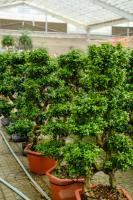When to Plant Crimson Clover?
Introduction
Crimson clover is a popular cover crop and forage crop that is widely cultivated for its benefits. It is also grown as a wildlife food plot and a beautiful ornamental plant. Planting crimson clover at the right time is crucial to ensure optimal growth, flower production, and seed set. In this article, we will discuss when to plant crimson clover and how to grow it successfully.
Climatic Conditions for Growing Crimson Clover
Crimson clover is a cool-season annual plant that thrives in cool climates. It is a versatile plant that can adapt to a wide range of conditions but prefers well-drained soils with a pH of 6.0 to 7.0. It can grow in sandy, loamy, or clay soils and can tolerate dry conditions, but it prefers to grow in areas that receive 18 to 40 inches of rainfall per year. Crimson clover is best suited for USDA hardiness zones 6 to 9.
Planting Time for Crimson Clover
The best time to plant crimson clover varies depending on your location and the intended use of the plant. In general, it is best to plant crimson clover in the fall or early spring when soil temperatures are between 45 to 60掳F. Planting at this time allows the plant to establish its roots before the onset of hot weather. Early planting in the fall has the advantage of providing maximum forage production and seed set in the spring. Late planting in the spring may result in reduced forage production but can be beneficial for soil improvement.
Planting Techniques for Crimson Clover
Planting crimson clover is relatively easy, and it can be done by broadcasting, drilling, or overseeding. Broadcasting is the easiest and most common method for planting crimson clover. In this method, you spread the seeds over the soil surface and then rake them lightly into the soil. Drilling involves using a seed drill to place the seeds uniformly in the soil. This method is more time-consuming but can result in higher yields. Overseeding is a technique used to establish crimson clover in an existing pasture or hayfield. It involves broadcasting the seeds over the existing grass and then mowing the grass before the clover begins to grow.
Care and Maintenance of Crimson Clover
Crimson clover requires minimal care and maintenance, but regular weed control is essential in the early stages of growth. Mowing or grazing can also be used to manage weeds and maintain the plant at the desired height. Crimson clover should be fertilized with nitrogen if it is grown for forage production. A nitrogen application of up to 60 pounds per acre is recommended at planting, followed by side-dressing with nitrogen at 30 to 50 pounds per acre when the plant is 6 to 8 inches tall. In general, crimson clover should not be harvested until it has reached the mid-bloom stage to ensure maximum yield.
Conclusion
In conclusion, planting crimson clover at the right time is essential to ensure optimal growth and yield. The best time to plant crimson clover may vary depending on your location and intended use of the plant. Whether you are growing it for forage or soil improvement, proper planting and care techniques can help you grow a successful crop. With its beautiful flowers and numerous benefits, crimson clover is a valuable addition to any garden, field, or landscape.

 how many times do yo...
how many times do yo... how many planted tre...
how many planted tre... how many pine trees ...
how many pine trees ... how many pecan trees...
how many pecan trees... how many plants comp...
how many plants comp... how many plants can ...
how many plants can ... how many plants and ...
how many plants and ... how many pepper plan...
how many pepper plan...




























